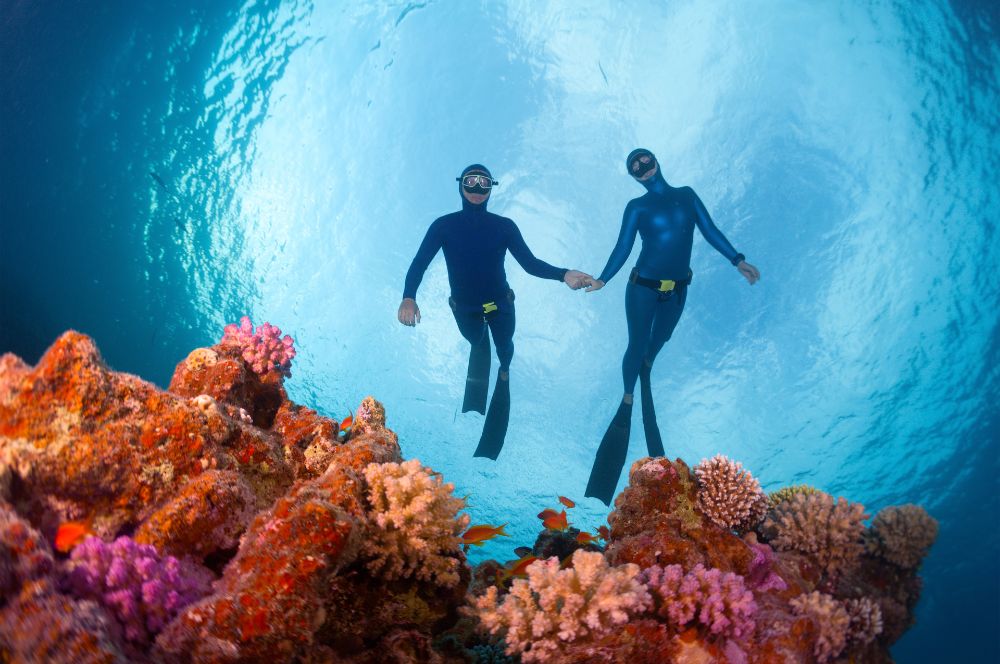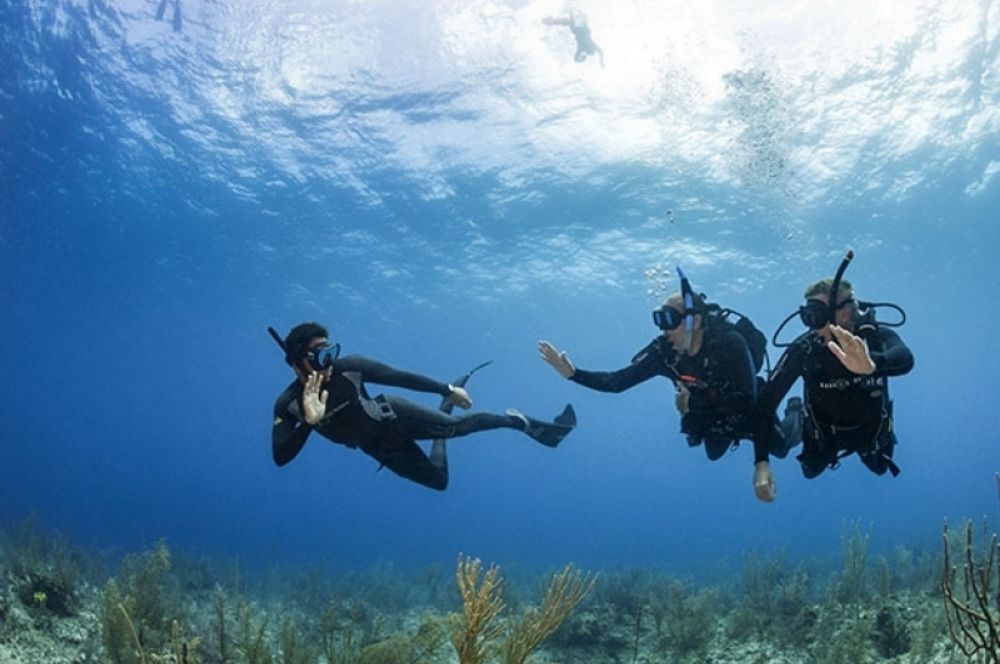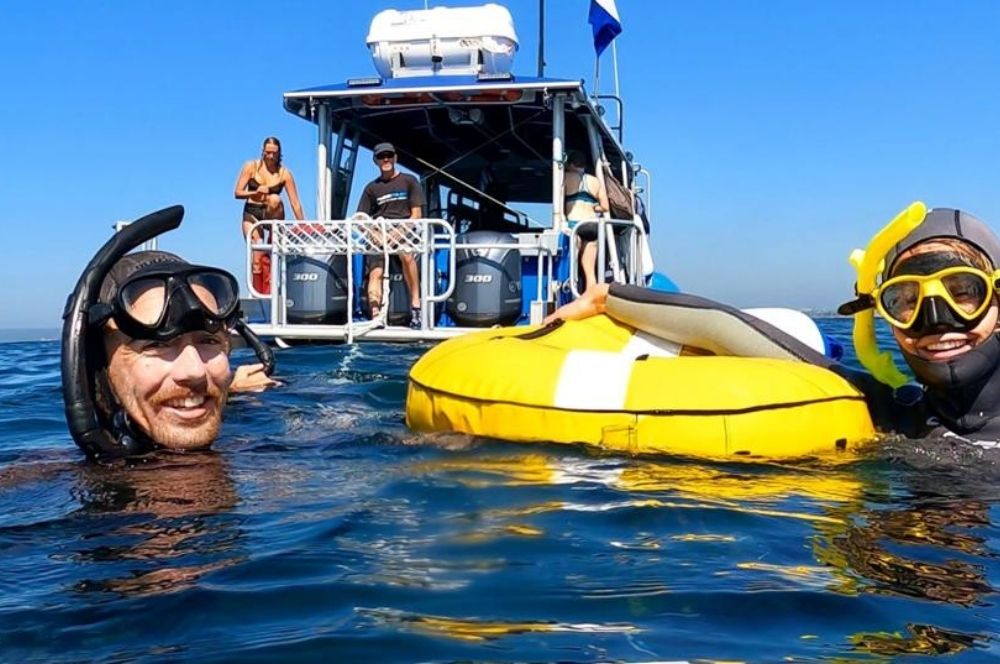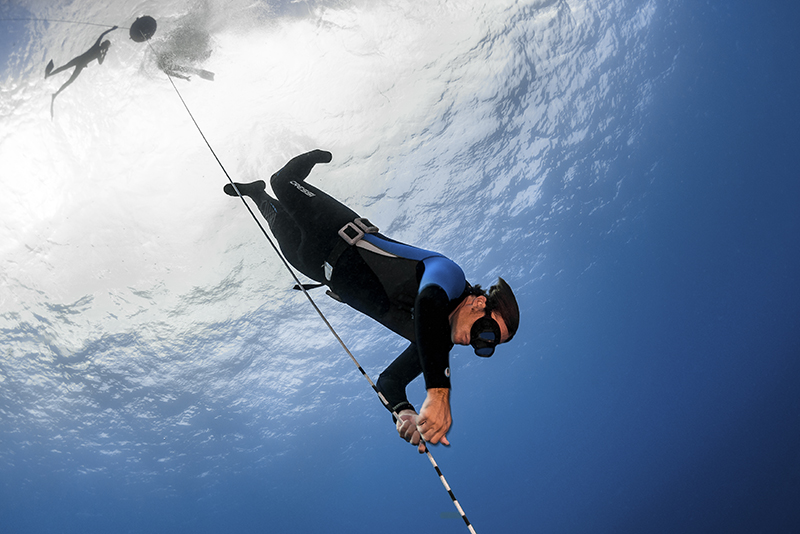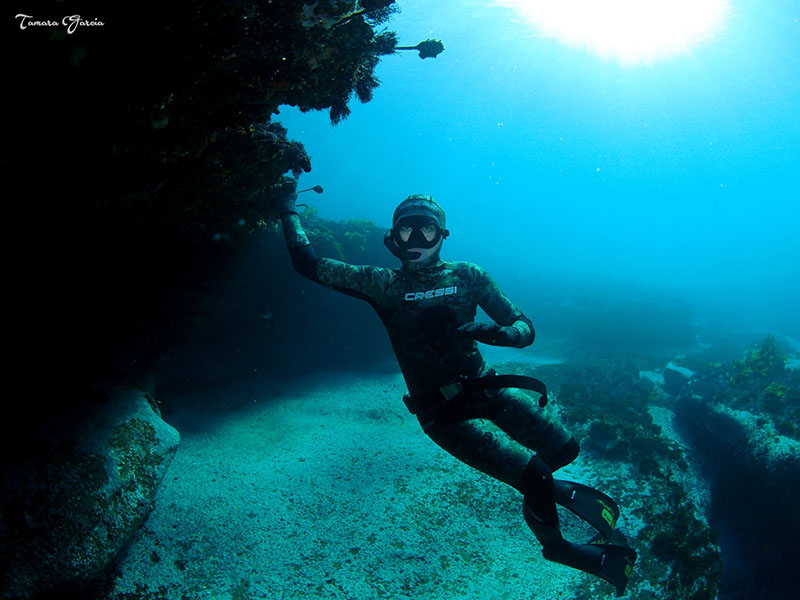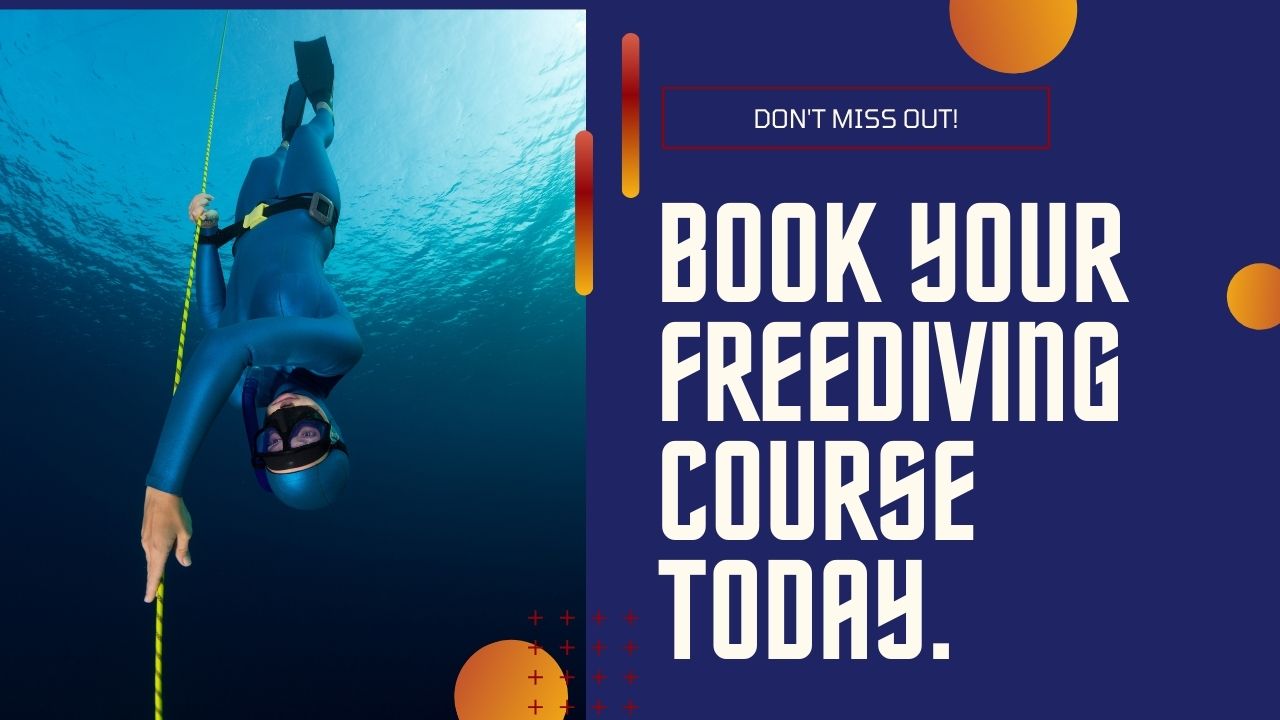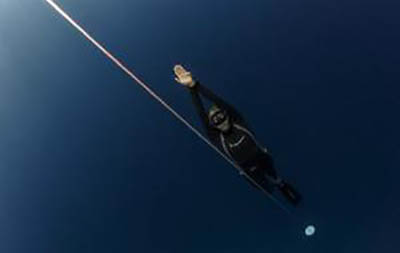You have 0 product(s) in your cart.
Abyss Scuba Diving
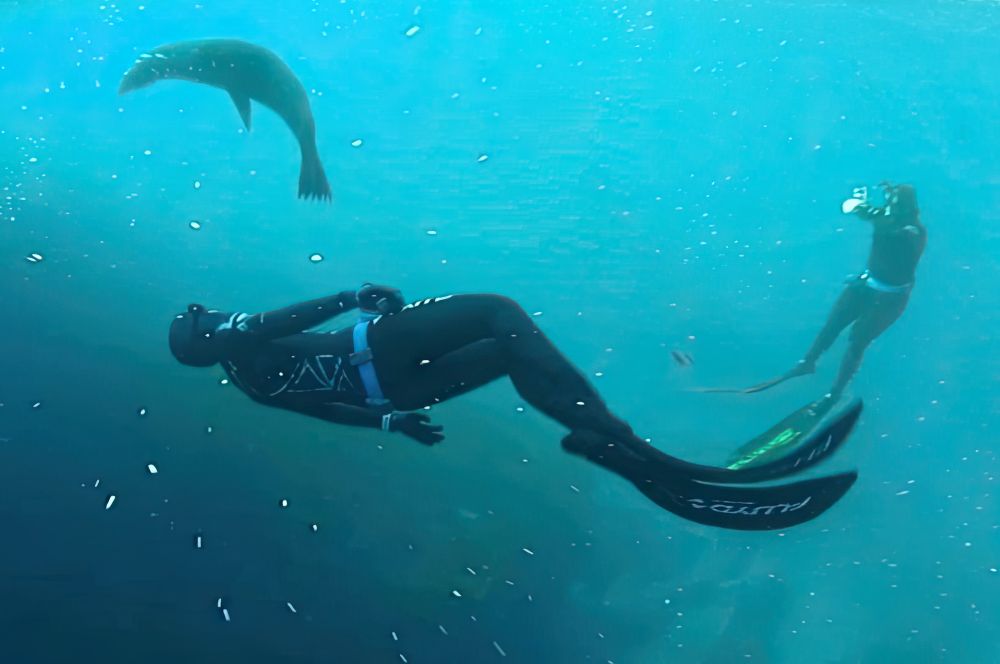
Exploring What is Freediving - A Deep Dive into the World of Free Diving
Freediving – the exciting sport that allows you to explore the wonders of the underwater world with a single breath, without using any breathing apparatus. This captivating activity, also known as "what is freediving," has been practised for thousands of years, evolving into a competitive sport with various techniques and disciplines. From its origins in ancient civilizations to the awe-inspiring world records held by elite divers, freediving is an activity that challenges both the body and the mind. Are you ready to immerse yourself in the fascinating world of freediving? Let's dive in!
Short Summary
-
Explore the underwater world without equipment or training with freediving.
-
Discover a range of disciplines and techniques to challenge your body & mind.
-
Follow safety protocols and take necessary precautions for an enjoyable experience.
Understanding Freediving
Freediving, also known as breath-hold diving, is an extraordinary activity that enables you to explore the underwater world without the need for SCUBA equipment or training. With its roots in ancient cultures, this sport has evolved into a popular recreational activity, as well as a competitive field that attracts world-class freedivers from around the globe.
Experienced freedivers utilize a variety of techniques, such as Constant Weight (CWT & CNF), Free Immersion (FIM), Variable Weight (VWT), and No Limits (NLT). Mental and physical aspects play a significant role in freediving, with practitioners often entering a meditative state as they dive deeper into the underwater realm.
The Origins of Freediving
The fascinating history of freediving dates back more than 7,000 years to the Chinchorros, an ancient civilization that lived along the coast of modern-day Chile. The sport we know today originated in the 1980s in the former USSR and was first played at the international level in 1993. Since then, freediving has gained immense recognition, with numerous countries around the world embracing this captivating activity.
Today, freediving is an exciting sport and recreational pastime, offering a unique opportunity to explore the underwater world and observe marine life in its natural habitat.
Techniques in Freediving
Freediving comprises various disciplines, each with its unique techniques and challenges. Constant Weight Freediving (CWT & CNF) is a discipline where divers maintain the same weight throughout the dive, relying solely on their muscle power to descend and ascend. For an even greater challenge, Constant Weight Without Fins (CNF) is a variation where divers do not use fins during their dive.
Free Immersion Freediving (FIM) presents a different challenge, as divers dive to great depths without using fins, pulling themselves up using the dive line. In No Limits Freediving (NLT), divers use a metal sled to reach thrilling depths and an air bag to ascend back to the surface.
There are countless opportunities to explore the underwater world with these techniques. Freediving can also be combined with other water sports such as spearfishing, underwater hockey, underwater rugby, and synchronized swimming. With proper training and safety measures, freediving can be a safe and awe-inspiring way to connect with the aquatic environment.
Mental and Physical Aspects
Freediving is not only a physical challenge, but also a mental one. It requires you to let go of preconceived notions and stay completely mindful of your body and the present moment. The mental benefits of freediving are plentiful – you can tap into the parasympathetic nervous system, practice mindfulness, relax your mind, control your breathing, and develop mental strength.
Moreover, freediving can help reduce stress and anxiety levels, making it an excellent activity for both physical and mental well-being.
Freediving Disciplines
The world of freediving offers numerous disciplines, each presenting its unique challenges and rewards. From Constant Weight (CWT), Constant Weight Without Fins (CNF), Free Immersion (FIM), and Variable Weight (VWT), to No Limits (NLT), there is a freediving discipline for every skill level and preference. These disciplines challenge divers to reach new depths, break personal boundaries, and experience the underwater world completely differently.
Beyond depth-based disciplines, dynamic freediving disciplines focus on distance rather than depth, taking place in a swimming pool environment. Dynamic With Fins (DYN) and Dynamic Without Fins (DNF) are two categories where divers aim to cover the longest distance underwater on a single breath, with or without the aid of fins. These disciplines provide a fun and challenging way to improve breath-hold capabilities and underwater swimming techniques.
Constant Weight Freediving (CWT & CNF)
Constant Weight Freediving presents two thrilling sub-categories: Constant Weight with Fins (CWT) and Constant Weight without Fins (CNF). In CWT, divers rely solely on their own muscle power to descend and ascend, without the aid of any external propulsion device. The impressive world records for CWT are held by Alexey Molchanov (120m) and Alessia Zecchini (102m).
For those seeking an even greater challenge, CNF requires divers to reach their target depth without the use of fins. William Trubridge holds the male CNF world record (102m), while Sayuri Knoshita holds the female CNF record (72m).
Free Immersion Freediving (FIM)
Free Immersion Freediving (FIM) is a discipline that allows divers to descend and ascend using only their arms, without the aid of any propulsion equipment. It is an incredible test of strength, endurance, and technique.
The astonishing world record for FIM is held by William Trubridge, who achieved a depth of 124 meters. Jeanine Gasmeijer holds the female world record for FIM, showcasing the remarkable achievements of both male and female athletes in this discipline.
Variable Weight Freediving (VWT)
Variable Weight Freediving (VWT) is an exciting discipline that involves the use of a weighted sled to descend to the desired depth. Once the target depth is reached, the diver releases the weight and makes their way back up to the surface using fins and pulling on the rope.
The incredible world records for VWT are held by Stavros Kastrinakis (146m) and Nanja Van Den Broek (130m), showcasing the exceptional achievements of freedivers in this exciting discipline.
No Limits Freediving (NLT)
No Limits Freediving (NLT) is the most extreme discipline of freediving, requiring divers to reach the deepest depths of the ocean. In NLT, divers use a weighted sled to descend and an inflatable lift bag to ascend back to the surface.
The awe-inspiring world records in NLT are held by Herbert Nitsch (214m) and Tanya Streeter (160m). These extraordinary achievements showcase the incredible capabilities of the human body and the determination of freedivers to push their limits.
The Science Behind Freediving
Freediving is not only an exciting sport, but also a fascinating study of the human body and its adaptations to the underwater environment. At the heart of freediving lies the Mammalian Dive Reflex, a set of physiological responses triggered when a mammal's face comes in contact with cool water. This reflex helps to conserve oxygen stores and reduce heart rate and blood pressure, allowing divers to stay underwater for longer periods of time.
Breathing and carbon dioxide tolerance are also essential aspects of freediving. As a freediver descends, their body experiences increased levels of carbon dioxide, which can lead to the urge to breathe. However, by increasing carbon dioxide tolerance through training and practice, freedivers can improve their breath-hold capabilities and reach greater depths.
Pressure adaptations also play a crucial role in freediving, as the human body must adjust to the increasing pressure experienced at greater depths.
The Mammalian Dive Reflex
The Mammalian Dive Reflex is an amazing set of physiological responses that occur in mammals, including humans when submerged in water. This reflex is hypothesized to help preserve oxygen stores for key organ systems during times of asphyxia.
When freediving, the body's heart rate can decrease by about 25%, with blood rushing from extremities into the core. This can even lead to a meditative state, with some freedivers recording a heart rate of around 14 beats per minute at depths of 250 to 300 feet.
The mammalian dive reflex not only helps divers explore greater depths but also provides a more relaxed state of mind and body during the dive.
Breathing and Carbon Dioxide Tolerance
Breathing and carbon dioxide tolerance play a vital role in freediving, as they directly impact the diver's ability to hold their breath for extended periods of time. To increase carbon dioxide tolerance, freedivers can practice various breathing techniques and breath-hold exercises, such as static apnea and dynamic apnea.
By improving carbon dioxide tolerance, freedivers can enhance their breath-hold capabilities and better handle the urge to breathe during a dive.
Pressure Adaptations
As a freediver descends deeper underwater, their body must adapt to the increasing pressure. Pressure adaptations include equalization of air spaces in the ears, sinuses, and lungs, as well as compression of the ribcage and the redistribution of blood to protect vital organs.
By understanding and adapting to these physiological changes, freedivers can dive safely, comfortably, and efficiently to greater depths. Learning equalization techniques and being aware of one's depth and time limits are essential for a successful freediving experience.
Freediving Records and Achievements
Freediving is a sport that continually pushes the boundaries of human achievement, with athletes setting remarkable records in various disciplines. These records showcase the incredible depths, distances, and breath-holds that can be achieved by elite freedivers, inspiring aspiring divers to challenge themselves and reach their full potential.
From the astounding depth records in disciplines such as Constant Weight (CWT & CNF), Free Immersion (FIM), Variable Weight (VWT), and No Limits (NLT), to the impressive dynamic freediving records held by male and female athletes, the world of freediving is filled with awe-inspiring feats and accomplishments.
These records not only highlight the incredible capabilities of the human body, but also the dedication, determination, and passion of the freedivers who push their limits to achieve greatness.
Depth Records
Freedivers have achieved astonishing depth records in various disciplines, such as Constant Weight (CWT & CNF), Free Immersion (FIM), Variable Weight (VWT), and No Limits (NLT). Alexey Molchanov holds the world record for CWT at 120 meters, while Alessia Zecchini holds the female CWT record at 102 meters.
In CNF, William Trubridge holds the record at 102 meters, and Sayuri Knoshita holds the female record at 72 meters. The breathtaking world record for FIM is held by William Trubridge, who achieved a depth of 124 meters.
In VWT, Stavros Kastrinakis holds the record at 146 meters, and Nanja Van Den Broek holds the female record at 130 meters. The most extreme discipline, NLT, has the deepest records, with Herbert Nitsch holding the record at 214 meters and Tanya Streeter holding the female record at 160 meters.
Dynamic Freediving Records
Dynamic freediving records focus on the distance swam underwater on a single breath, rather than depth. These records showcase the incredible endurance and technique of freedivers in two sub-categories: Dynamic With Fins (DYN) and Dynamic Without Fins (DNF).
The men's world record for DNF is held by Mateusz Malina, who swam an astounding 244 meters, while the women's world record is held by Magdalena Solich with a swim of 191 meters. These inspiring records demonstrate the exceptional abilities of freedivers to push their limits and achieve remarkable feats in this exciting sport.
The Risks and Safety of Freediving
While freediving can be an exciting and rewarding sport, it is essential to be aware of the potential risks and hazards associated with it. Common freediving hazards include shallow water blackout, lung squeeze, decompression sickness, barotrauma, nitrogen narcosis, and dehydration. However, with proper safety protocols and preparation, these risks can be mitigated, allowing divers to enjoy a safe and fulfilling freediving experience.
To ensure safety while freediving, it is crucial to receive proper training, use appropriate equipment, and always dive with a buddy. Creating a comprehensive dive plan, assessing sea conditions, and staying within one's skill level are also essential for a safe and enjoyable freediving experience. By being aware of the potential hazards and taking the necessary precautions, divers can fully immerse themselves in the captivating world of freediving.
Common Freediving Hazards
Freediving presents several potential hazards that divers must be aware of to ensure their safety. Shallow water blackout is a serious condition that can occur when a diver holds their breath for too long, causing a lack of oxygen to the brain and leading to a loss of consciousness. Lung squeeze is a dangerous condition that can arise when a diver descends too quickly, causing the lungs to collapse and potentially leading to serious injury or death.
Other hazards include decompression sickness, barotrauma, nitrogen narcosis, and dehydration. In addition, divers should be mindful of marine debris, fishing hooks, fishing nets, shipwreck debris, toxic waste, and ear barotrauma, which can pose additional risks.
Safety Measures and Training
Safety is paramount in freediving, and proper training, equipment, and supervision are essential in ensuring a safe and enjoyable experience. Enrolling in a certified freediving course can provide invaluable knowledge on the basics of freediving as well as the proper techniques and safety measures required.
When diving, always dive with a buddy who is experienced in freediving and can assist in case of any trouble. Additionally, using a safety lanyard, choosing the right amount of weights, and staying hydrated and nourished can help maximize safety during a freediving session.
Getting Started with Freediving
If you're interested in starting your freediving journey, there are several resources and steps to help you embark on this thrilling adventure. Freediving courses and certifications, essential gear, and tips for beginners are all available to assist you in exploring the underwater world on a single breath.
Freediving courses and certifications offer an excellent opportunity to learn from professional freediving organizations and gain invaluable knowledge about the sport. These courses can be taken in person or online, and are tailored to various skill levels and disciplines. By enrolling in a course, you can learn the proper techniques, and safety measures, and gain the confidence to fully enjoy the captivating world of freediving.
Freediving Courses and Certifications
Various freediving courses and certifications are available for both beginners and experienced divers, provided by renowned organizations such as PADI, AIDA, and Molchanovs. These courses cover a range of disciplines, including Constant Weight, Free Immersion, Static Apnea, and Dynamic Apnea, and are designed to teach the fundamentals of freediving, proper techniques, and safety measures.
Enrolling in a freediving course is an excellent way to gain valuable knowledge, improve your skills, and become a confident and capable freediver.
Essential Freediving Gear
To begin your freediving journey, you'll need some essential gear, including a mask, snorkel, fins, wetsuit, weight system, and dive watch. Other gear, such as a knife, lanyard, socks, and gloves may also be necessary, depending on the location and your level of training.
When selecting gear, it's important to consider the type of freediving you'll be doing, the environment you'll be in, and your level of experience. Additionally, ensuring that the gear fits comfortably and properly is crucial for an optimal freediving experience.
Tips for Beginner Freedivers
For beginner freedivers, focusing on relaxation, mastering breathing techniques, and building up confidence are essential steps to success in the sport. Start by practicing your breath-hold and equalization techniques in a controlled environment, such as a swimming pool. Gradually progress to open water dives, always diving with a buddy and staying within your skill level.
As you gain experience, you can explore deeper depths and try different freediving disciplines, continually challenging yourself and expanding your underwater horizons.
Summary
Freediving is a captivating sport that allows you to explore the underwater world on a single breath, with its origins dating back thousands of years. Today, freediving offers a range of disciplines and techniques, enabling divers to push their limits and achieve remarkable records. By understanding the science behind freediving, such as the Mammalian Dive Reflex and pressure adaptations, divers can safely explore the depths of the ocean. With proper training, essential gear, and a focus on safety, you too can embark on an unforgettable freediving journey and experience the wonders of the underwater world.
Frequently Asked Questions
Frequently Asked Questions
What is the point of freediving?
Freediving is an incredibly rewarding and empowering experience! Whether for the challenge of exploring underwater worlds, taking beautiful photos, or boosting mental and physical health - it's a great way to immerse yourself in the natural environment.
Freediving has something to offer to everyone who loves being in the water.
Do you breathe out when freediving?
Yes, when freediving, you will eventually have to exhale. However, the general advice is that you should hold your breath until you reach the surface of the water, as it is important to maintain as much oxygen in your lungs as possible. Holding your breath while freediving can be challenging, but if done properly can result in an exhilarating experience.
How long do free divers hold their breath?
Most of us can only hold our breath for around 30 seconds, but free divers are trained to stay underwater for far longer. With the right techniques, some of them can hold their breath for up to 10 minutes!
Free diving is an extreme sport that requires intense training and dedication. It involves diving to great depths without the use of any breathing apparatus. Free divers must learn to control their breathing and heart rate in order to stay in the water.
How do people breathe in freediving?
People breathe in freediving by practising diaphragmatic breathing or abdominal breathing. This involves taking slow, deep breaths and using the diaphragm muscle to control the breath rate.
Taking time to practice this technique allows divers to stay calm and relaxed while diving, allowing them to hold their breath for longer periods of time.
What do you mean by free diving?
Freediving is an amazing and exhilarating activity that allows you to explore the ocean depths without relying on any breathing apparatus. By holding your breath underwater, you are free to explore beneath the surface and experience the beauty and serenity of the underwater world.
It's a thrilling adventure and one that you won't soon forget!
-
Freediving Courses
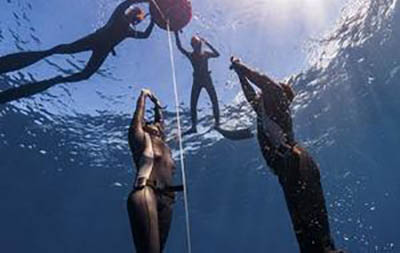
Freediving Courses
Check out our range of freediving courses as we offer a range of freediving training giving all […] -
Freediving Gear
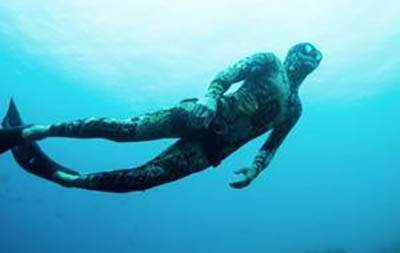
Freediving Gear
Freediving equipment is usually designed to be comfortable, streamlined and light to wear, […] -
Mermaid Training

Mermaid Training
Mermaiding is similar to freediving but focuses on creativity, movement and fun. Moreover, you don’t […]
Recent Posts
